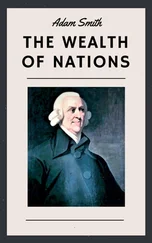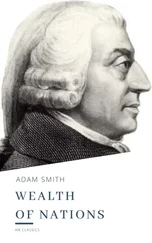Abbreviations for Smith’s Works
All references to Smith’s works will be to the standard scholarly edition, the Glasgow Edition published by Oxford University Press, and will refer to the volume by title and page. Other notes will direct the reader to helpful secondary material listed in the bibliography that further explores the issues at hand.
Ancient Physics :‘The Principles which Lead and Direct Philosophical Enquiries; Illustrated by the History of the Ancient Physics’, in Essays on Philosophical Subjects , ed. W. P. D. Wightman. Oxford: Oxford University Press, 1980 [1795], pp. 106–17.
Astronomy :‘The Principles which Lead and Direct Philosophical Enquiries; Illustrated by the History of Astronomy’, in Essays on Philosophical Subjects , ed. W. P. D. Wightman. Oxford: Oxford University Press, 1980 [1795], pp. 31–105.
Correspondence : Correspondence of Adam Smith , eds Ernest Campbell Mossner & Ian Simpson Ross, rev. edn, Oxford: Oxford University Press, 1987.
Imitative Arts :‘Of the Nature of that Imitation which Takes Place in What Are Called the Imitative Arts’, in Essays on Philosophical Subjects , ed. W. P. D. Wightman, Oxford: Oxford University Press, 1980 [1795], pp. 176–213.
Jurisprudence : Lectures on Jurisprudence , eds R. L. Meek, D. D. Raphael, & P. G. Stein. Oxford: Oxford University Press, 1980.
Moral Sentiments : The Theory of Moral Sentiments , eds D. D. Raphael & A. L. Macfie. Oxford: Oxford University Press, 1976 [1759].
Rhetoric : Lectures on Rhetoric and Belles Lettres , ed. J. C. Bryce. Oxford: Oxford University Press, 1983.
Wealth of Nations : An Inquiry into the Nature and Causes of the Wealth of Nations , 2 vols, eds R. H. Campbell & A. S. Skinner. Oxford: Oxford University Press, 1976 [1776].
1 Smith and the Scottish Enlightenment
Adam Smith (1723–90) is unusual among philosophers from over two hundred years ago. He is unusual because his work is still widely read and discussed today. But more significant than this, his name is still widely known by the general public. Smith has become one of the few world historical figures who have entered into the common intellectual landscape of our culture. Unfortunately the ‘Adam Smith’ that exists in the popular imagination is somewhat different from the Adam Smith who lived and wrote in eighteenth-century Scotland.
Smith and his thought have become the focus of increasing interest among scholars since the publication of a critical edition of his writings in the late 1970s. Part of the aim of this scholarship has been to dispel the mythology and correct the caricature that has arisen around Smith. Adam Smith the first economist, the father of capitalism, the defender of laissez-faire economics, the advocate of selfishness, and the prophet of the invisible hand of the market has been seized upon by both advocates of free market economics and critics of capitalism. Smith has been set up as both the hero of the libertarian right and the villain of neo-liberalism. This caricature is something that Smith scholars have sought to correct by careful study of what he actually wrote. While such views are commonplace among the general public, those who read Smith’s two great books, The Theory of Moral Sentiments and the Wealth of Nations , quickly see that there is much more to the man and his thought. That said, many of those who do this are then struck by the apparent tension between the discussion of sympathy in the former and the analysis of self-interest in the latter. This seeming contrast between a description of humans as benevolent in one book and selfish in the other led some of Smith’s nineteenth-century German readers to regard his thought as self-contradictory. As we will see, the so-called ‘Adam Smith Problem’ has been dismissed by Smith scholars, but its residue lingers on in the popular imagination.
The present volume is intended to be a contribution to these tasks of dispelling a caricature and dismissing an accusation of inconsistency. Its aim is to present a reading of the whole of Smith’s work, to indicate the systematic and interconnected nature of his writings on topics as diverse as economics, moral philosophy, science, and literature. In so doing, it will present a reading of Smith that is unified by his consistent application of a particular methodology, a way of doing philosophy or science, which acts as a powerful tool when applied across a range of what are now distinct academic disciplines. In addition to providing an argument that focuses on Smith’s texts, we will trace his intellectual context and explain why he was interested in the particular ideas and subjects that he discussed.
Understanding where Smith came from, how he was educated, whom he interacted with, and what he hoped to achieve, will illuminate his thought. Showing that Smith was a man of his time helps to dispel the contemporary caricature, but it will also show the reader that he remains an enduringly relevant thinker, one who should not be confined to history. The basis of this argument will be two-fold: it will stress the relevance of Smith’s understanding of the nature of what we now call the social sciences, and drawing on that it will emphasize the centrality of his attempts to explain the unintended consequences of human action. Taken together, these two aspects of his thinking open up a Smithian way of understanding the world that lies at the heart of this book.
Adam Smith was born in the small Scottish port town of Kirkcaldy in the county of Fife in 1723. His family, whose background lay in a mixture of minor gentry and farming, was connected by patronage to many of the powerful families of eighteenth-century Scotland. His father, also Adam Smith, died before he was born. Smith senior was a comptroller of customs at Kirkcaldy and a writer to the signet (solicitor) who was attached to the Whig and Presbyterian cause that formed the backbone of the new Scottish establishment that arose after the Union of Parliaments between Scotland and England in 1707 and the Hanoverian succession to the throne after the death of Queen Anne. Smith’s father served a number of influential politicians, including the Earl of Loudon, who were supporters of the Union. Smith senior played an active role in opposing the first Jacobite rising, an attempt to restore the Stuart family to the British throne in 1715, and his reward for this was a steady advancement through the patronage network of government positions that dominated life in Scotland.
Smith’s mother, Margaret Smith, née Douglas, was related to several of the most prominent families in Fife, so the young Adam was born into a very particular set of social and political connections. The death of his father left him in his mother’s care, and this seems to have built a particularly strong bond between them that lasted until Margaret’s death a mere six years before his own.
Kirkcaldy had developed as a port which traded with the Baltic States and the Low Countries. In addition to fishing, it depended on coal and salt production. Both of these had begun to decline by the time Smith was born, and there was a significant level of smuggling along the Fife coast – an activity that Smith’s father was expected to help to police. Smith was born into a respectable, but by no means wealthy, family and received a first-rate education at the Burgh school in Kirkcaldy. Here the forward-thinking school master, David Miller, taught the young Smith the usual mixture of Latin, arithmetic, geometry, and rhetoric that passed for the standard Scottish curriculum, but he did so in a manner that stressed the practical value of the often abstract knowledge. One of Miller’s key innovations was his stress on polite learning and public speaking. Pupils like Smith were required to read a passage, often from The Spectator (a popular collection of ‘polite’ essays by Joseph Addison and Richard Steele), and then present its content in their own words. The exercise was designed to aid both comprehension and rhetorical skill. Smith was a gifted student and he seems to have thrived in an environment that sought to produce confident and articulate young men able to occupy the leading places in society.
Читать дальше












